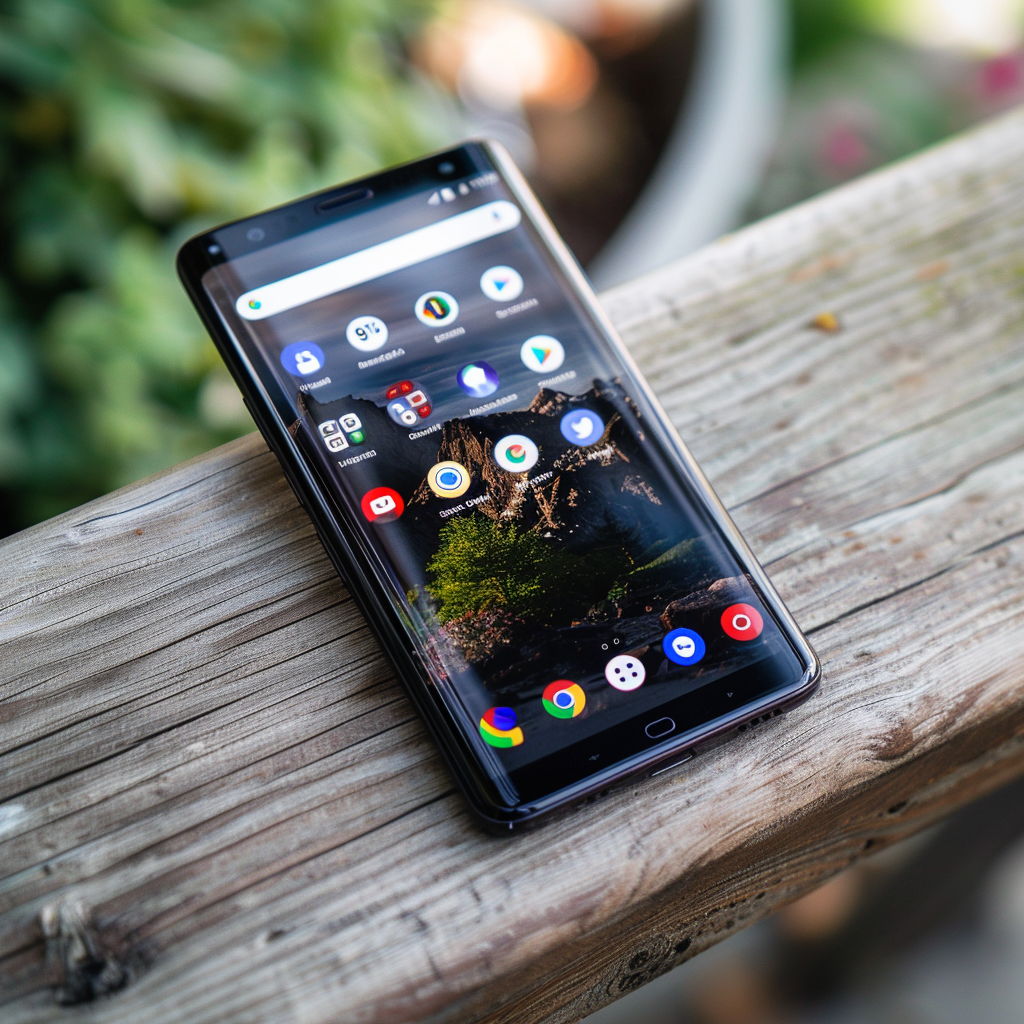
Unlock the secrets of prepaid phones and revolutionize your mobile experience with this comprehensive guide.
Are you considering switching to a prepaid phone plan? Or maybe you’re just curious about how prepaid phones work. In either case, you’ve come to the right place! In this comprehensive guide, we will demystify prepaid phones, explain how they work, and highlight the benefits and drawbacks associated with them. So, let’s dive in!
Table of Contents
Understanding Prepaid Phones
First things first, what exactly is a prepaid phone? Well, a prepaid phone is a mobile device that operates on a pay-as-you-go basis. Unlike traditional postpaid plans, where you pay a fixed monthly fee, with prepaid phones, you purchase credits or minutes in advance and use them as you go.
One of the key differences between prepaid and postpaid plans is the absence of a contract. With prepaid phones, you have the freedom and flexibility to switch providers or plans whenever you want, without any penalties or obligations.
However, it’s important to evaluate the pros and cons of prepaid phones before making a decision. On the plus side, this type of plan provides you with greater control over your expenses. There are no surprise bills at the end of the month since you only spend what you’ve prepaid. Additionally, prepaid phones are an excellent choice for individuals who don’t want to commit to long-term contracts or undergo credit checks.
SAMSUNG Galaxy S23+ Plus Qualcomm SM8550-AC Snapdragon 8 Gen 2 Smartphone, Fastest Mobile Processor, 8GB 512GB, 50MP Camera, 8K Video, US Version 2023 Phantom Black
Original price was: 1,119.99$.1,034.99$Current price is: 1,034.99$. -8%| General | ||||||||||||
|---|---|---|---|---|---|---|---|---|---|---|---|---|
| ||||||||||||
| DESIGN & DISPLAY | ||||||||||||
| ||||||||||||
| PLATFORM | ||||||||||||
| ||||||||||||
| STORAGE | ||||||||||||
| ||||||||||||
| MAIN CAMERA | ||||||||||||
| ||||||||||||
| FRONT CAMERA | ||||||||||||
| ||||||||||||
| BATTERY | ||||||||||||
| ||||||||||||
On the downside, prepaid phones often have higher cost-per-minute rates compared to postpaid plans. Furthermore, the selection of phone models available for prepaid plans might be more limited, and you may not enjoy the same network coverage as postpaid users do.
How Prepaid Phones Work
So, how does the whole prepaid phone process work? Let’s break it down:
Purchasing a prepaid phone: To get started, you’ll need to purchase a prepaid phone. These can be found at various retail stores or online. It’s important to check the device’s compatibility with different carriers if you plan on using an existing phone.
Activating and setting up a prepaid plan: Once you have your prepaid phone, it’s time to activate and set up a prepaid plan. This involves selecting a carrier and plan that suits your needs. Some carriers may require you to visit their website or call customer service to activate your plan.
Choosing a suitable prepaid plan: Prepaid plans come in various forms, offering different amounts of credits, minutes, and data. It’s crucial to assess your usage patterns and choose a plan that aligns with your needs and budget. If you use a lot of data, make sure to consider plans that offer adequate data allowances.
Recharging and managing credit or minutes: As you use your prepaid phone, your credit or minutes will gradually decrease. To continue using the service, you’ll need to recharge or “top-up” your account by purchasing more credits. Most carriers offer multiple convenient methods for topping up, including online and through mobile applications.
SAMSUNG Galaxy A54 5G, US Version Factory Unlocked Android Smartphone, 128GB w/ 6.4-inch, Fluid Display Screen, Long Battery Life, Hi Res Camera, Refined Design, 2023, Awesome Violet
Original price was: 449.99$.399.99$Current price is: 399.99$. -11%| General | ||||||||||||
|---|---|---|---|---|---|---|---|---|---|---|---|---|
| ||||||||||||
| DESIGN & DISPLAY | ||||||||||||
| ||||||||||||
| PLATFORM | ||||||||||||
| ||||||||||||
| STORAGE | ||||||||||||
| ||||||||||||
| MAIN CAMERA | ||||||||||||
| ||||||||||||
| FRONT CAMERA | ||||||||||||
| ||||||||||||
| BATTERY | ||||||||||||
| ||||||||||||
Benefits of Prepaid Phones
Now that you understand how prepaid phones work, let’s explore some of the key benefits associated with using them:
Flexibility and control over mobile expenses: With a prepaid phone, you have complete control over your mobile expenses. You decide how much to spend and when to recharge your account, eliminating any potential bill shock.
No credit checks or contracts: Unlike postpaid plans, prepaid phones do not require credit checks or binding contracts. This makes them accessible to a wider range of individuals, even those with poor credit scores or those seeking short-term mobile solutions.
Ideal for travelers or temporary users: Prepaid plans are excellent options for individuals who frequently travel or need a temporary mobile solution. You can easily switch between carriers or plans as needed, ensuring that you’re not tied down to a specific provider or locked into a contract that doesn’t meet your needs.
Effective data usage management: Prepaid plans are beneficial for people who want to manage their data usage effectively. Since you pay for data in advance, you become more aware of your consumption habits and can avoid exceeding your limits, ultimately preventing unexpected charges.
Access to affordable plans and promotions: Prepaid plans often come with flexibility and affordability. Carriers frequently offer promotions and discounts to attract new customers. Comparing different plans and providers allows you to find the best value for your money.
Drawbacks of Prepaid Phones
While there are many advantages to prepaid phones, it’s essential to consider their drawbacks as well:
Potentially higher costs per minute or data: Prepaid plans may have higher costs per minute or data compared to postpaid plans. If you rely heavily on your phone for lengthy conversations or data-intensive activities, a prepaid plan might not be the most economical option.
Limited phone options and device compatibility: Some carriers offer a limited selection of phone models for prepaid plans, and not all phones are compatible across different carriers. If having the latest smartphone is important to you, it may be harder to find it with a prepaid plan.
Top-up and expiration limitations: Prepaid credits or minutes typically come with expiration dates. If you fail to recharge your account within the specified timeframe, you may lose your remaining balance. It’s important to keep track of expiry dates and ensure timely top-ups to avoid any inconveniences.
Potential for inconsistent network coverage: In some cases, prepaid users may not receive the same network coverage and quality as their postpaid counterparts. Network priority may be given to postpaid users in busy areas or during periods of high network congestion. Before committing to a prepaid plan, it’s wise to check the coverage map and read user reviews to assess network performance in your area.
Tips and Considerations for Using Prepaid Phones
If you’re planning to use a prepaid phone, consider the following tips and recommendations:
Monitoring and managing usage: Keep an eye on your usage to avoid unexpected costs. Regularly check your balance and understand how much you’re using in terms of minutes, data, and texts.
Utilizing Wi-Fi networks: To minimize data consumption, connect to Wi-Fi networks whenever possible. This allows you to use your data sparingly and save more on prepaid credit.
Researching and comparing plans: Take the time to research and compare prepaid plans offered by different carriers. Consider aspects such as coverage, data allowances, and any additional perks or promotions that might interest you.
Using money-saving options: Some carriers offer money-saving options such as auto-renewal or bulk packages. These can provide better value for money and save you the hassle of having to remember to recharge your account frequently.
Understanding SIM cards and compatibility: If you’re planning to use your current device with a prepaid plan, make sure to check its compatibility with different carriers. You may need to unlock your phone or purchase a SIM card from the carrier of your choice.
Frequently Asked Questions about Prepaid Phones
Let’s address some common questions that often arise when considering prepaid phones:
Can I keep my existing phone number when switching to a prepaid plan? – Yes, in most cases, you can transfer your existing phone number when switching to a prepaid plan. Contact the carrier you plan to switch to for more details.
Can I switch from a postpaid to a prepaid plan? – Absolutely! You can switch from a postpaid to a prepaid plan at any time, granting you the flexibility to match your mobile needs with the most suitable plan.
What happens if my prepaid credit or minutes expire? – If your prepaid credit or minutes expire, your service will be temporarily suspended until you top up your account. However, most carriers provide a grace period during which you can still receive calls, even if you can’t make outgoing calls.
Can I unlock a prepaid phone for use with a different carrier? – Yes, you can usually unlock a prepaid phone to use it with a different carrier. However, it’s always best to check with the carrier for their specific unlock policy.
Do prepaid plans offer international calling and roaming options? – Prepaid plans vary in terms of international calling and roaming options, so it’s crucial to review the specific offerings of your chosen carrier. Some prepaid plans include international calling or data roaming packages, while others may require additional add-ons or may have limitations.
In Conclusion
To sum it up, prepaid phones are an attractive option for many individuals due to their flexibility, control over expenses, and accessibility. By understanding how prepaid phones work and weighing their benefits and drawbacks, you can make an informed decision that best suits your mobile needs and budget.
Remember to monitor your usage, research different plans, and consider any tips or recommendations provided. Whether you’re a frequent traveler, a budget-conscious individual, or simply looking for a temporary mobile solution, prepaid phones offer a viable and efficient alternative to traditional postpaid plans.








